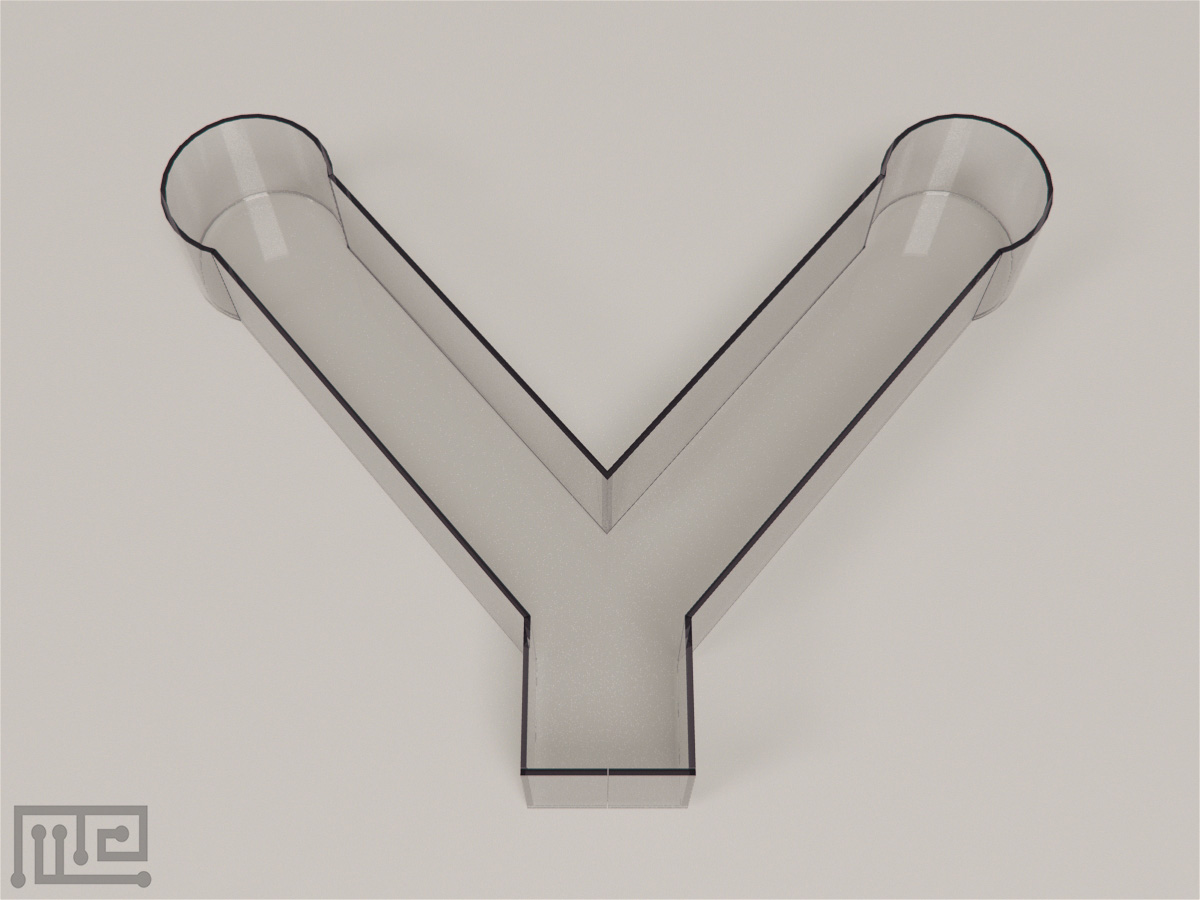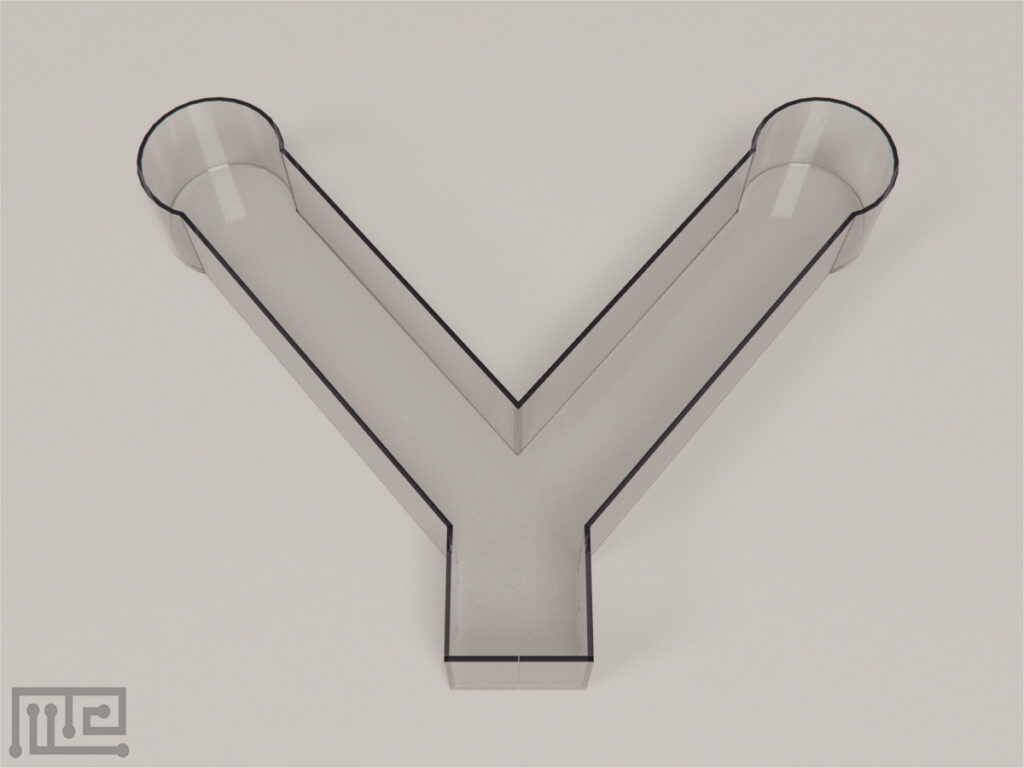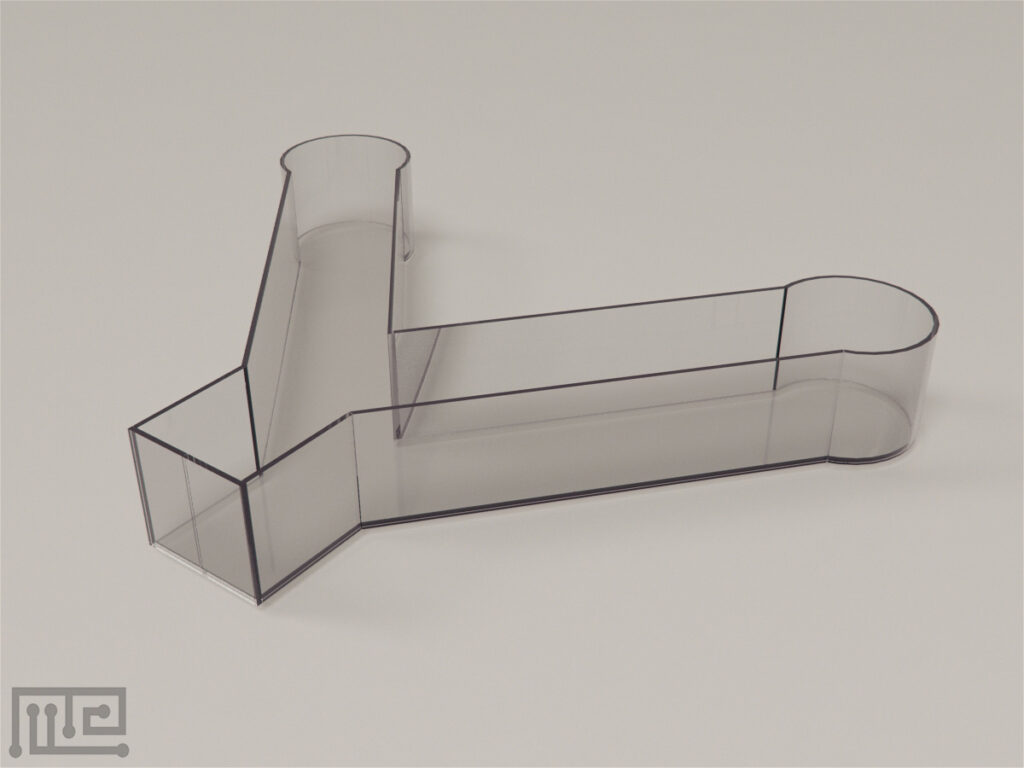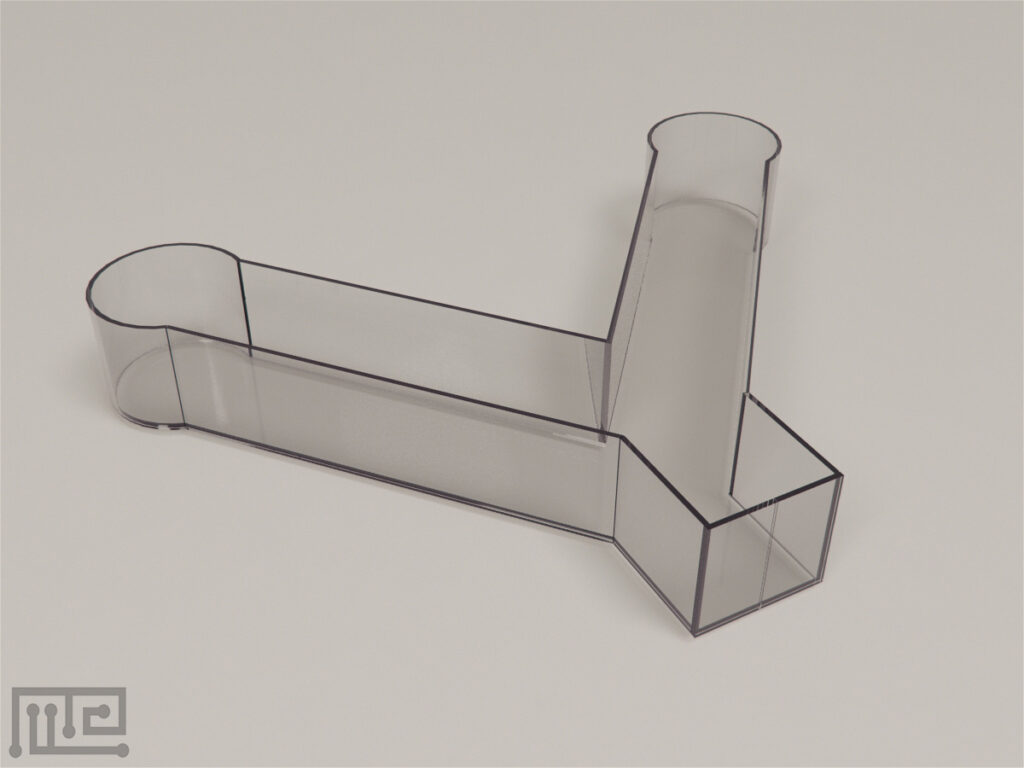The Slime Mold Y-maze is utilized in evaluating problem-solving and decision-making behaviors of the unicellular slime mold. It allows a simple, yet complex environment to assess the learning capabilities of the organism.
The maze provides a two-choice set-up that narrows the decision-making process for the slime mold, thereby decreasing the number of parameters involved during data analysis. It consists of a start arena that allows entry to two choice arms. Each choice arm is equipped with a goal end that can be used for placing of rewards or stimuli.
The maze can be adapted to evaluate behaviors such as foraging under different conditions (such as light versus dark or high versus low-quality food).
Mazeengineers offer the Slime Mold Y-maze.
Price & Dimensions
Slime Mold Y-maze
$ 990
+S&H- Length of start area: 1cm
- Width of start area: 1cm
- Length of choice arm: 4cm
- Diameter of goals for food: 1.2cm
- Agar substrate: 1%
Documentation
Introduction
The Slime Mold Y-maze is utilized in evaluating problem-solving and decision-making behaviors of the unicellular slime mold. The maze uses the same concept as the traditional Y- and T-Mazes used in the evaluation of learning and memory of animals such as rodents (Rodent Y-maze and Rodent T-maze), pigs (Pig T-maze) and fish (Zebrafish Y-maze and Salmon Y-Maze).
The traditional understanding of learning implies that a nervous system is required for an animal to be able to learn. However, numerous studies have shown learning as well as efficient decision-making capabilities in the nonneuronal, reactive organism, the slime mold (Reid, Garnier, Beekman, & Latty, 2015). The Slime Mold Y-maze allows a simple, yet complex environment to assess the learning capabilities of the organism. The maze provides a two-choice set-up that narrows the decision-making process for the slime mold, thereby decreasing the number of parameters involved during data analysis. The maze can be adapted to evaluate behaviors such as foraging under different conditions (such as light versus dark or high versus low-quality food). Other investigatory areas can include observation of preference behaviors in plasmodia that exhibit fusing with other genetically similar and compatible plasmodia.
The Slime Mold Y-maze consists of a start arena that allows entry to two choice arms. Each choice arm is equipped with a goal end that can be used for placing of rewards or stimuli.
Apparatus and Equipment
The Slime Mold Y-maze is composed of 1 cm × 1 cm start area that allows that leads to two choice arms. Each choice arm is 4 cm in length with a 1.2 cm diameter goals that can be used to place food. The maze uses 1% agar substrate.
Training Protocol
Ensure that substrates used are not contaminated with unintended stimuli. Experimental conditions should be maintained throughout the task to prevent unintended influences. Task observations can be assisted by the use of tracking and recording system such as the Noldus EthoVision XT.
Avoidance Response Task (Extracellular Slime vs. Blank Trail)
Obtain extracellular slime by allowing a culture of slime mold, from the same stock being tested, to migrate (8 to 12 hours) across a 1% agar surface. Place the agar with the extracellular slime trail in one of the Y-Maze arms. Place blank agar in the other arm. Reward the ends of each arm with food such as oats. Place 3 cm2 of plasmodial in the start area and begin observation. Alternate the arm containing the slime trail between replicates.
Protocols can vary depending on the investigatory aims.
Evaluation of externalized spatial memory-based navigation in slime mold
Reid, Latty, Dussutour, and Beekman (2012) evaluated the decision-making behaviors of the physarum polycephalum plasmodia when encountered with a path that exhibited the previous exploration versus a blank path. The plasmodia were placed in the start area of the Y-Maze with both choice arms leading to identical food sources (10% wt/vol powdered oat-agar) at their ends. One of the choice arms was trailed with extracellular slime obtained from conspecifics while the other consisted of only plain agar. Of the 40 plasmodia tested, 39 chose the blank path suggesting a strong preference for unexplored pathways. However, when both paths were covered with extracellular slime, plasmodia showed no preference for either path. Additionally, no left or right bias was observed when the organism was tested in agar only set-up. Based on the observations, it was concluded that the presence of extracellular slime trail influences the decision of the plasmodia only when a choice is available. Further, the behaviors also suggested that the plasmodia are able to sense and use the presence of the extracellular slime as an externalized spatial memory system to differentiate between explored and unexplored areas.
Data Analysis
The following parameters can be observed in the Slime Mold Y-maze,
- Distance covered
- Percentage of plasmodia that reach the goal
- Selection of the correct arm
- Selection of the incorrect arm
- Speed with which the goal was reached
- Split decisions (both goals reached by the organism at the same time)
- Time taken to reach the goal
- Time spent in the start area
Strengths and Limitations
The Slime Mold Y-maze offers a simple design that serves as a complex test environment for slime mold. Behaviors such as decision-making and problem-solving can be effectively assessed using the Y-Maze. The two-choice set-up simplifies the analysis of performances; however, a limited number of choices may not be suitable for all learning-based experiments. The maze can be adapted to for exploration of other experimental aims such as preference testing and effects of different path compositions or environments on slime mold behavior.
The slime mold behaviors can be influenced by the presence of unintended chemical cues in the maze. Slime mold displays an averseness for bright lights, and hence appropriate lighting set-up should be used during experimentation.
Summary
- The Slime Mold Y-maze is used in the assessment of problem-solving and decision-making behaviors of slime mold.
- The Y-Maze serves as a complex environment for slime mold despite its simplistic design.
- Slime mold display avoidance behaviors towards cues such as extracellular slime and bright lights, which can be used to manipulate the Y-maze environment during the task.
- The Slime Mold Y-maze can easily be adapted for different experimental protocols.
- Presence of unintended chemical cues within the maze can affect slime mold performances.
References
- Reid, C. R., Garnier, S., Beekman, M., & Latty, T. (2015). Information integration and multiattribute decision making in non-neuronal organisms. Animal Behaviour, 100, 44–50. doi:10.1016/j.anbehav.2014.11.010
- Reid, C. R., Latty, T., Dussutour, A., & Beekman, M. (2012). Slime mold uses an externalized spatial “memory” to navigate in complex environments. Proceedings of the National Academy of Sciences, 109(43), 17490–17494. doi:10.1073/pnas.1215037109




